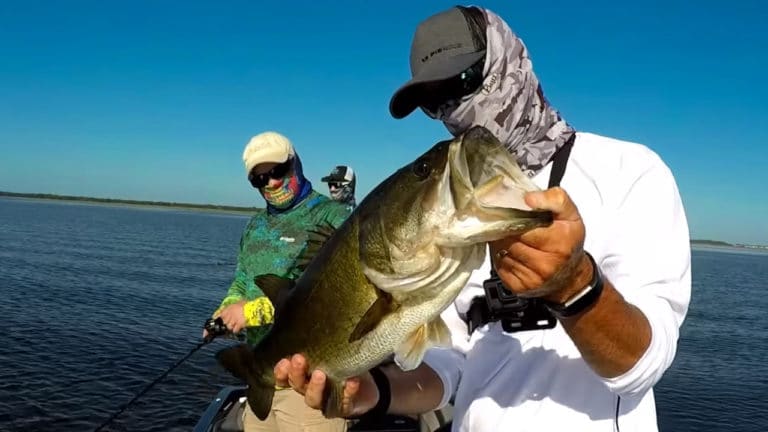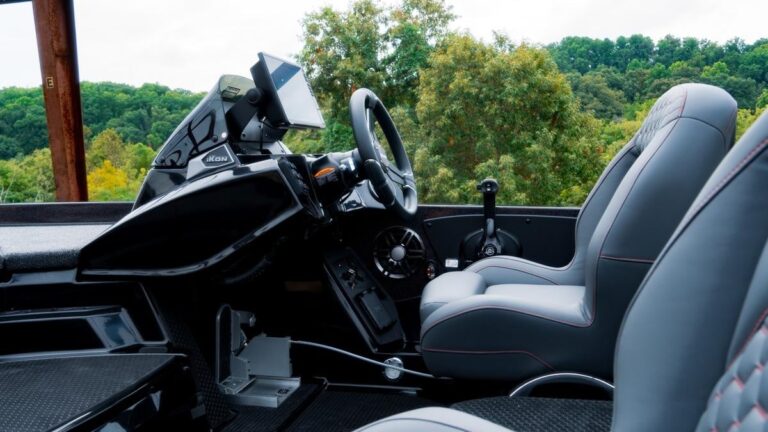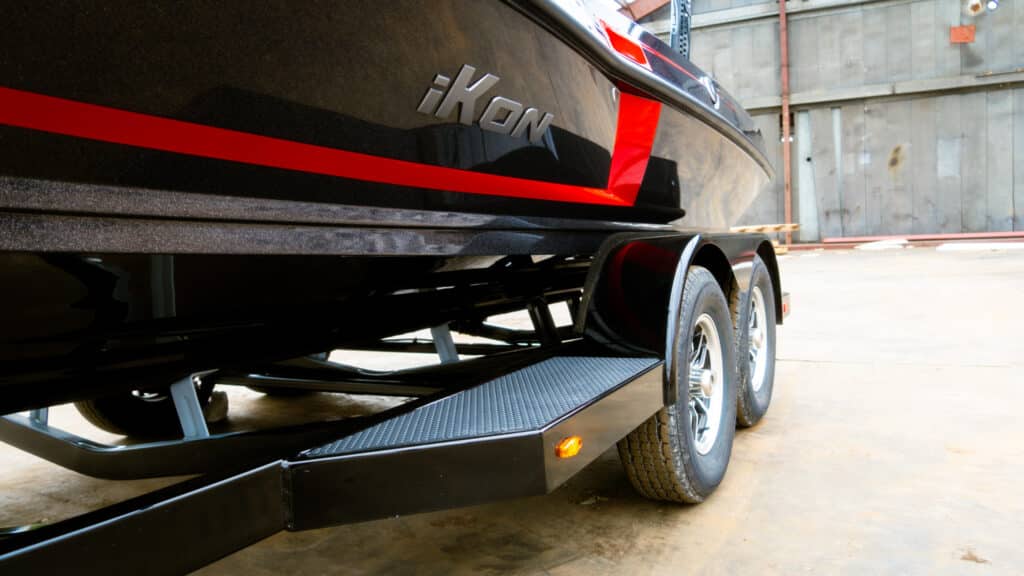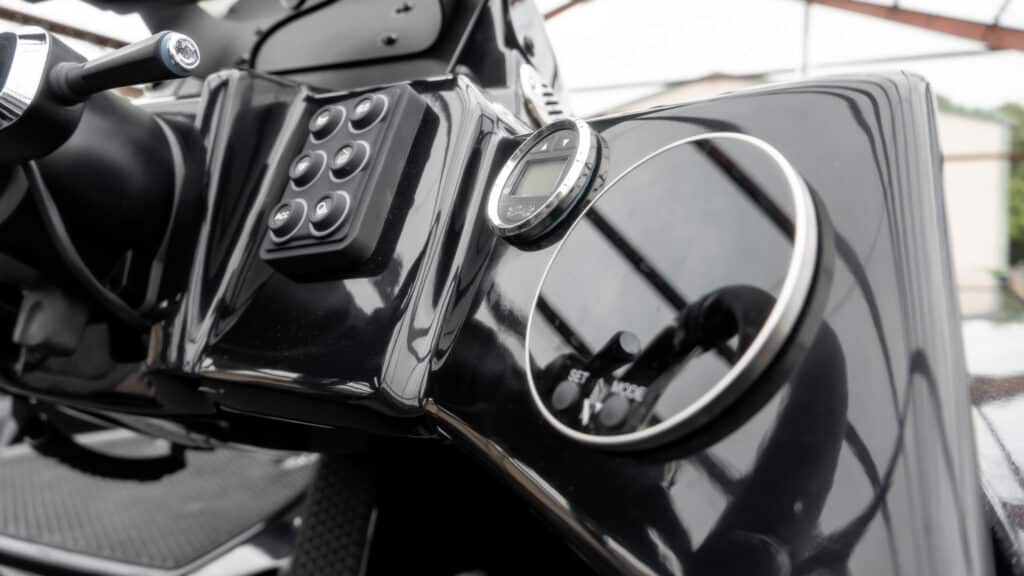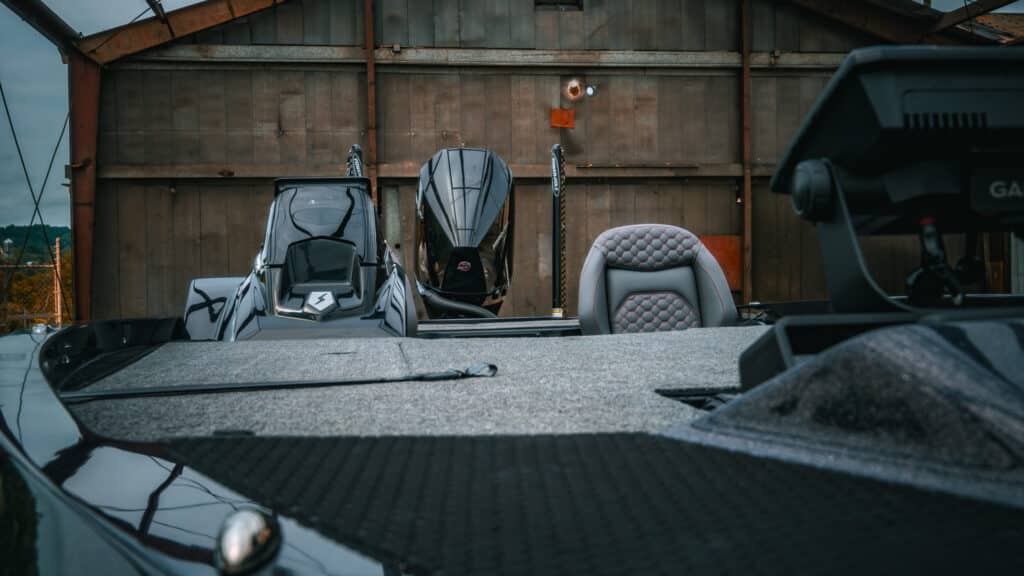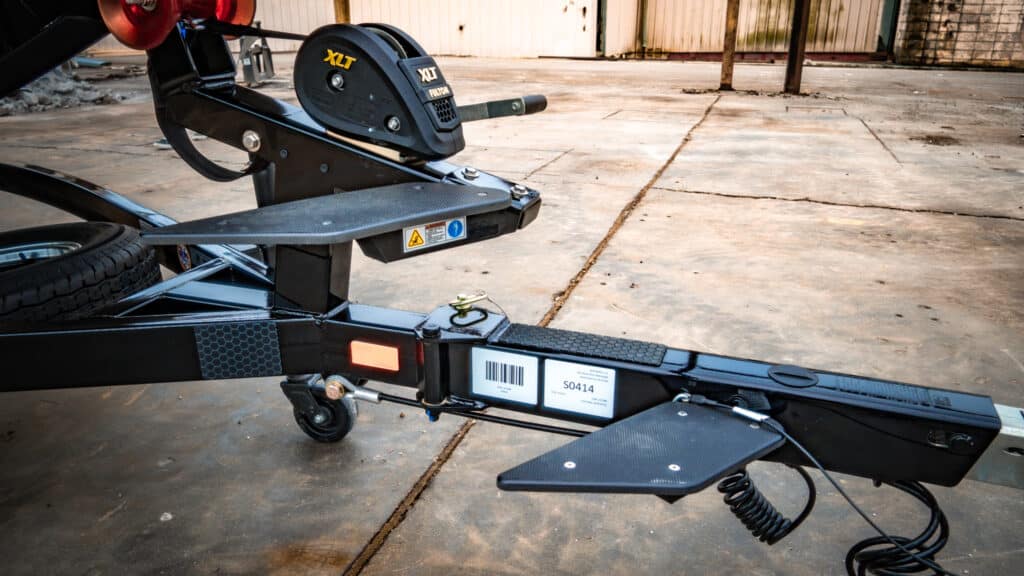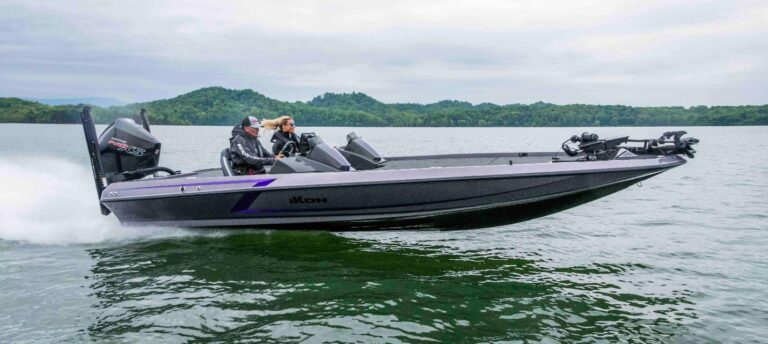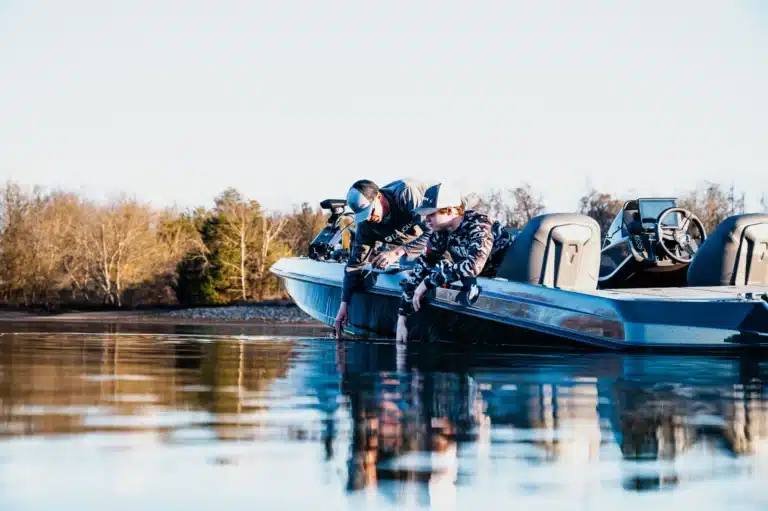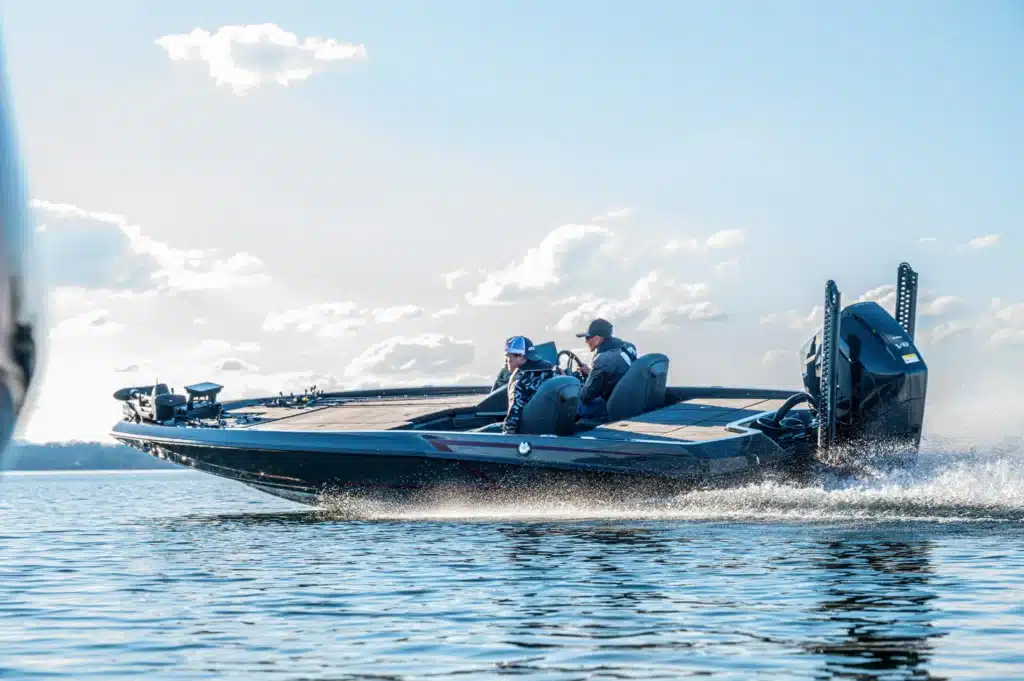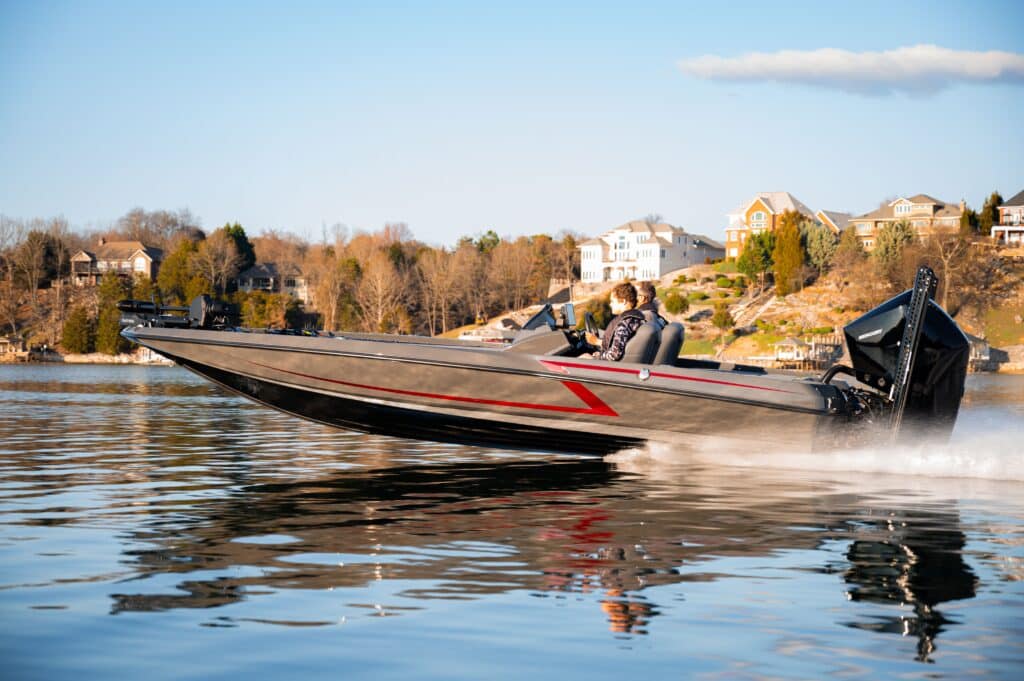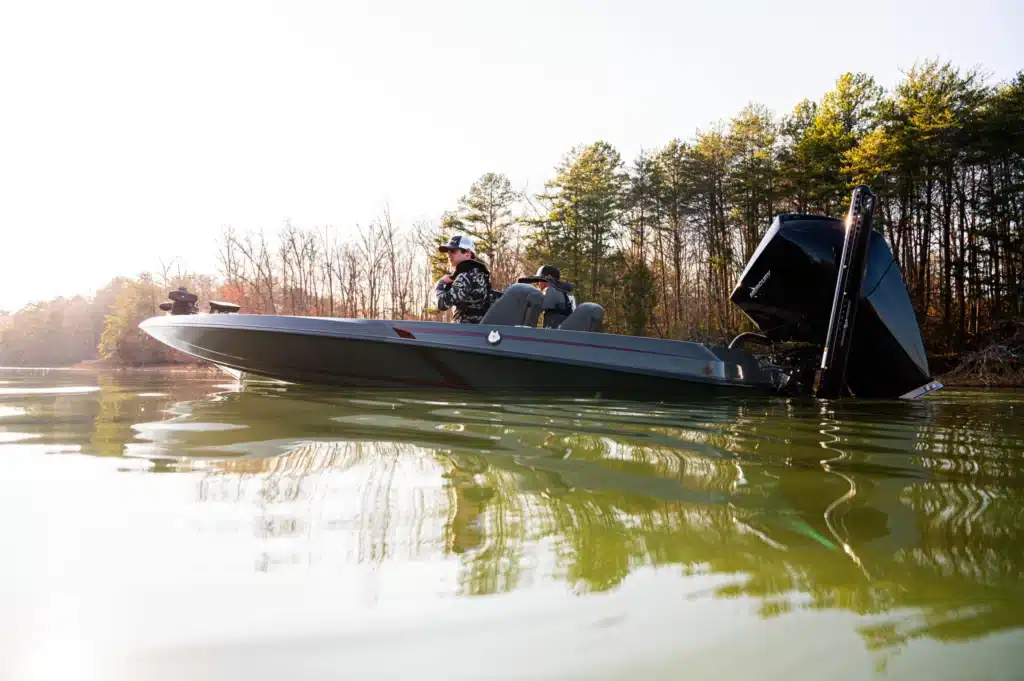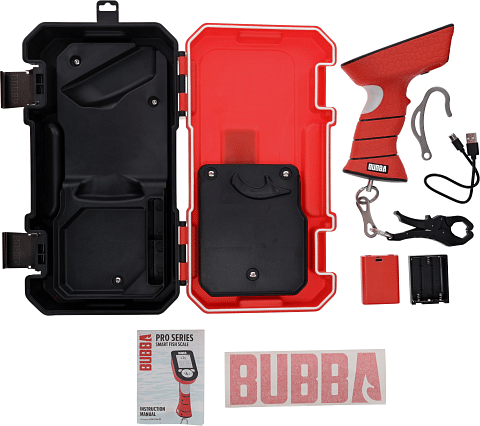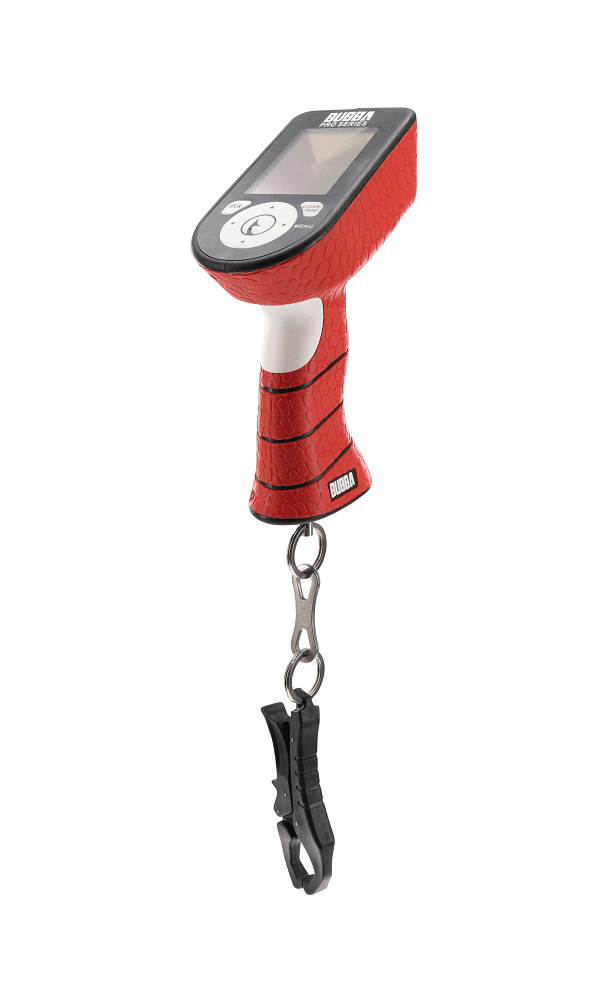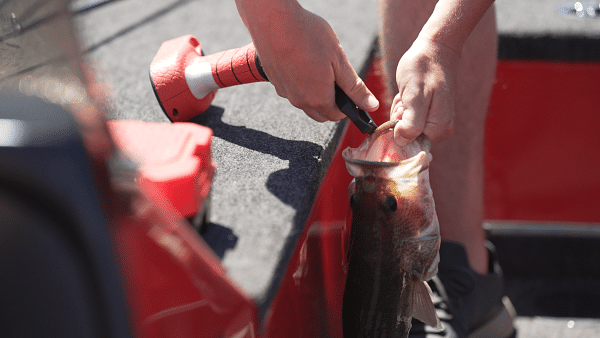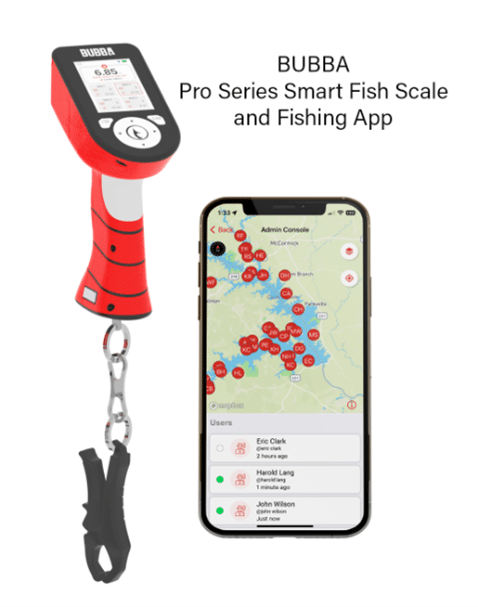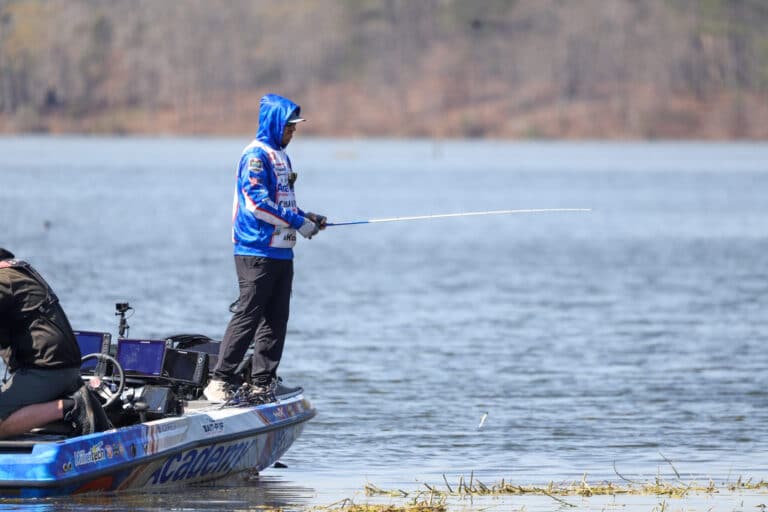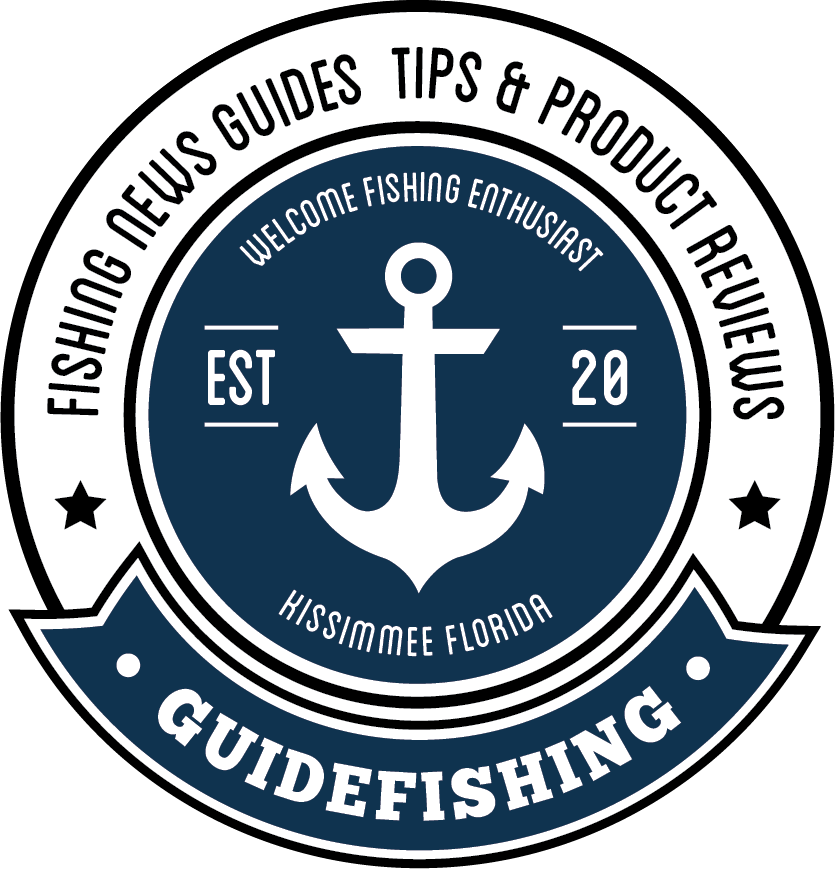By William K. Johnke
Published by Dorbil Publishing Co.
Uniondale, NY October 1995, First Edition
Copyright (c) 1995 by W.K.Johnke
All rights reserved
***I N T R O D U C T I O N ***
The Largemouth Bass is America’s all-out favorite game fish !
It is probably the most glamorous species in the fresh waters of the world today.
The largemouth is fundamentally a lake fish, and that is where it colonizes best. It is not a scavenger, it is strictly predaceous! It is not fussy about food. “If it moves, eat it!” is a kind of motto of the species.
Passionate pleasures are derived from the enticing and ensnaring this voracious largemouth bass. Enticing a bass to accept a lure is pleasure in itself, but finding where such bass may be at any given time is the greatest challenge of all! In order to assist finicky fishermen to become more successful at catching bass, an in-depth scrutiny of highly regarded and well known literature on bass and bass angling was undertaken. The ensuing outline of bass behavior traits summarizes the noteworthy factors pertaining to this fish. Giving serious thought to and applying the factors outlined herein should lead to a better understanding and appreciation of its life cycle, its behavioral patterns, and how best to entice it to strike.
We bass fishermen today are fortunate that our predecessors in their wisdom saw fit to introduce this species of fish into waters far beyond its natural habitat. Largemouth bass are now to be found extensively in “warm” freshwaters around the world. However, because this bass is by nature exceptionally wary of the dangers affecting its existence, it is frequently frustrating to not be consistently successful in catching them.
The following discourse is compiled from selected appropriate extracts of various noted authorities and writers, on the behavior and habits of Largemouth Bass (Micropterus Salmoides) and with particular application to waters of the northern United States.
This compilation of information is a merging of the experimentations, studies, findings, observations and opinions of leading aquatic and fishing experts over decades of their painstaking analyses on the behavior of largemouth bass.
It is hoped that a greater success rate in the catching of largemouth bass will be achieved by those anglers who may grasp the information contained herein.
LARGEMOUTH BASS
General Attributes
The Largemouth Bass is the basic freshwater game fish. He is voracious as a predator but extremely wary of danger and spends only a very small portion of each day actually feeding. (More on this later)
George W. Bennett of the Illinois Natural History Survey concludes that the largemouth is the most “intelligent” of game fishes. They are extremely curious and this results in a good many getting hooked early in life. But they soon become wary (maybe “educated” is a better word) and often this leads anglers to believe a lake is “fished out” or does not contain many bass. A largemouth bass soon learns that lures, especially those it sees most often, can get it into trouble. The quality of fish and fishing can be readily diminished by too much angling pressure (at least by too much removal of the larger breeding-size bass). However, an undesirable alteration or destruction of its habitat is the greatest hazard contributing to the depletion of the species in any given body of water.
The Largemouth Bass (Micropterus Salmoides) is the most adaptable of all the bass species. Given the choice, he will avoid bottom areas of lakes and other waters which are overly muddy or layered with silt. But the Largemouth Bass is also very tolerant, and if muddy water is unavoidable from time to time he will simply make do. The water may be clear, stained, murky, warm, cool, shallow, deep, cover-free, or infested with jungle-like swamp growth and chances are excellent that “Micropterus” and his progeny will get along just fine.
This bass is built to probe and forage around logs, rocks, and other forms of protective cover. The largemouth have a firm muscular body built primarily for strength rather than for speed.
Bass are equipped with broad powerful tails, excellent vision, superb hearing, vibration sensitivity, and have the ability to maneuver underwater quickly and effectively. These bass are not tailored to long pursuit and the chances of a largemouth running down a lure over a considerable distance is slim.
When in a feeding mood the bass will normally simply hide and wait until an unsuspecting quarry passes close by, or it may just glide closer to its prey and merely open its huge mouth and inhale strongly. This quickly draws the prey into its mouth with the sudden in-drawn current of water in a manner similar to that which we humans use a straw to guzzle liquids.
The “strike” or “take” of a large female bass will probably be much lighter than that of a male. An angler must be alert to the feel of a gentle “mouthing” of the bait or lure, be aware if his line is slowly moving, and be ready to set the hook immediately!
When angered, startled, or provoked into attacking a prey, the preferred feeding strategy of a bass is to strike instantly when the prey (or lure) passes within relatively close range. In this event it will usually grab the prey and quickly dash away, returning to its station of safety. Largemouth Bass have a burst of swimming speed of about twelve miles per hour, but their sustained swimming speed is much less.
They feed primarily by sound (vibration) and sight. They can detect even the smallest vibrations caused by other fish or prey pushing aside water as they move through or onto it. With their extremely acute vision they take full advantage of periods or areas of subdued light. Any predator prefers to remain in darker waters where it is somewhat concealed and where it is far easier to see prey passing by which is swimming in better-lit water while the bass remains in semi-darkness. Then — Surprise!
A “Lunker” largemouth caught north of the Kentucky and Tennessee region is any fish of five or six pounds. Some do grow larger, depending upon the characteristics of the lake in which they exist. In Florida it is only a largemouth of ten pounds or more which will raise admiring eyebrows among locals.
The world’s record largemouth bass is 22-1/4 pounds taken by George W. Perry in Montgomery Pond near Valdosta, Ga. in 1932. In Florida where growing season is year-round, largemouth bass usually run about fifteen or sixteen pounds but even these are mighty rare. Some lakes in the northern United States have produced bass of 14 pounds plus, but such fish are rare. Even with their relatively short growing seasons, these lakes often produce better fishing for large bass than should normally be expected for such geographical regions.
Growth rates vary in direct proportion to the fertility of the water, the length of the growing season each year, and the numbers of other fish competing for the food supply.
It is always the female bass which attains the greater weight. Male or “buck” bass rarely grow to any size larger than three or four pounds.
In northern lakes the anticipated length of a female largemouth bass is as follows:
| At the end of the – | First Year | 4″ |
| Second Year | 7 1/2″ | |
| Third Year | 9″ | |
| Fourth Year | 11″ | |
| Fifth Year | 13″ | |
| Sixth Year | 15″ | |
| Seventh Year | 17″ | |
| Eighth Year | 19″ | |
| Ninth Year | 21″ | |
| Tenth Year | 23″ | |
| Eleventh Year | 25″ |
To determine the weight of a largemouth bass in the absence of a scale, the following formula based upon linear measurements of the fish is a reliably accurate method of calculating its weight:
| L x G x G | |
| W = | ———– |
| 800 |
L = Length [in inches] from nose to fork in tail
G = Girth [in inches] around fleshiest portion of body
W = Weight of fish in pounds
SPAWNING ACTIVITIES
If we are to be successful in the pursuit of the largemouth bass it is important to understand the factors relating to the propagation of its kind and their resulting effect upon the later life, habits and instincts of the fish.
Ordinarily they spawn only once each year, in the spring when the water temperature reaches the preferred condition. Generally, the largemouth bass can be expected to commence spawning activities almost anytime after the water temperature has risen past the 60-degree mark.
The most active spawning, however, occurs when the water for the first time reaches the 65-degree mark. In the northern regions the spawning doesn’t begin until late April or May. Yet the entire reproduction process there may not begin until June.
Bass are typically school fish for the greater part of the year but they disperse or scatter when the mating season approaches and they become very territorial about their bedding locations. A largemouth’s spawning bed will take on a circular shape from twelve to twenty-five inches in diameter by about six inches deep.
Largemouth bass normally spawn at water depths averaging between three and five feet, but the extremes run from a few inches to ten or twelve feet. Spawning sites ideally are where the bottom is of hard-packed sand, pea-gravel, clay, or marl with a very thin layer of mud covering the hard material. Largemouth bass prefer to deposit eggs on rootlets of submerged grass or aquatic vegetation. An average bass nest will be in water three or four feet deep. Bass bedding locations will predominantly be found in coves and bays adjacent to the main body of water. These are the shallow areas where sunshine first increases the water temperature to a desirable spawning level. Such areas are located predominantly on the north shores of the lake where the seasonal low-angle un-shaded sun has a more prolonged warming effect.
There will probably be ten beds back in protected embayments for every one located along the banks of the main body of water. Selected sites will be where they are not buffeted by prevailing winds. Mud shallows won’t do unless nothing else is available. Lily pads ordinarily will be over muck bottoms and bass will avoid these for spawning unless better areas do not exist. Normally, nests are seldom closer than twenty to twenty five apart in order to escape from potential predator “cousins”.
The male bass serves the most important and active role in the spawning behavior of the species. The male “buck” selects a suitable bedding site and then fans out the nest. When the water temperature has remained at spawning level or above for several days, the females begin to appear. The female bass linger in “holding-areas” near deeper water, awaiting preparation of the spawning beds. The male searches out a “ripe” female and herds her to the bedding location. Once on the bed he may swim continual circles around her to discourage her from leaving and may even repeatedly bump her ventral region with his nose to trigger her into dropping her eggs.
If shallow-water fishing efforts during the potential spawning period seem to be resulting only in small bass, the season is probably still in its earliest stages and the majority of fish in the shallows are the smaller males concerned with nest-bed preparation. Fishing efforts may be shifted to the drop-offs, the edges of stream channels, and similar (adjacent to deeper water) holding-station locations of the larger females awaiting the males to lead them to the spawning area. During this time the bass normally have no feeding urge, not unlike oceanic salmon during their spawning runs up coastal rivers. However, these bass can be provoked into striking a lure which they perceive as a threat to their spawning process.
In most cases the female will drop only a portion of her eggs on a nest at any one time. The male then spreads his fertilizing milt over the bed and eggs. Days later, with another male, the female may drop more eggs on some other bed not far away. Several female bass frequently deposit more eggs in the same nest as well as in others. Multiple attempts at egg laying are probably nature’s insurance policy, since a certain percentage of beds or eggs each year are sure to be accidentally destroyed due to radical fluctuation in water levels or abrupt changes in water temperatures.
Eggs may hatch anytime from two to five days after they have been fertilized by the buck and are cared for by the male parent – until his appetite gets the better of him. The male largemouth will remain near the bed to protect the young fry from predators for a short while, usually not more than a week. He eventually succumbs to his increasingly ravenous hunger and becomes a leading predator himself, gobbling up as many of his own fry as possible.
The hatched fry initially feed upon plankton and other minute aquatic organisms, later switching to the smallest of crustaceans and terrestrials, including various insect forms which commonly flit about most shallow-water areas during the spring and summer. Young bass that survive feed on tiny water animals called Cyclops or Daphnia. As they grow older they add larger and larger insects to the menu.
A bass’ life is one of eating and being eaten. It is an aquatic rat race to survive. Insects and amphibians compete to eat the eggs as soon as they are dropped. After they hatch, larger fish are always seeking the fry. Even their own parents and other bass feed upon them. And it’s only fair to add that anglers are the least serious threat in the entire life cycle. When bass are about five inches in length they may also feed heavily upon small minnow species.
The well-planned scheme on the part of Mother-Nature causes them for the very first time to begin fending for themselves. This instinct of self-preservation is usually accomplished by remaining in or around heavy shoreline cover, hiding from those who would make a meal of them in short order.
The young fry up to an inch or more in length linger in a family school. This schooling instinct remains with the fish throughout his life. With many predators now feeding upon the small fry, it is early on that a young bass becomes adept at hiding and soon accepts the philosophy of “eat or be eaten”. This activity is exhibited throughout the life-span of the bass and is a major consideration for a bass angler in locating and catching the species.
Heavy rains and floods can take a toll. Conceivably they can wipe out an entire year’s quot;hatch” overnight in one lake or in one region. Similarly, any draw-down of the lake water during spawning season can wipe out the entire hatch of the year. Turbidity (the presence of silt or earth in suspension) can also interfere with spawning because it filters rays of sunlight necessary to hatch eggs by slowly heating the water.
WHERE BASS ARE FOUND
Bass are averse to bright sunlight and shallow water makes them feel ill at ease. When they leave the spawning grounds they usually hide around some type of cover which affords shade and seclusion. Upon completion of the spawning period, the adult bass will head for the deeper water. Left behind will be the younger bass, in various stages of growth ranging from two to twelve inches in length (many of them from previous spawning seasons), to find whatever comfort, food, and hiding the shallow shoreline cover may provide.
Importantly, after the spawning cycle is complete, the larger adult bass are now occupying the deeper waters and at this time are more active than ever. They are feeding heavily during those certain times of day when their biological clocks tell them to replenish fuel supplies. They have now moved away from inhabiting the shorelines and won’t return again until the following spring.
However, it should not be assumed that by simply moving away from the shoreline means that bass will be easily found and caught, because it is established that 90 percent of any given body of water, at any given time, is as barren of good-sized fish as your living room.
Only 10 percent of the water at any given time possesses the combination of ideal characteristics (temperature, oxygen content, PH factor, turbidity, structure, cover, food, etc.) that bass will be seeking under the prevailing water and weather conditions. The overwhelming majority of bass will be found in that 10 percent of water.
Once bass have grown beyond the yearling size, they have an instinctive desire to school with like members of their species. They will group together with others of their own approximate size. The larger the size of individual fish comprising the school, however, the smaller the school in numbers and the more tightly it will group together. The very largest bass in any given body of water may sometimes group together in twos and threes, but just as often they are loners. The larger the bass become, the more likely they are to prefer deeper water and the harder it is for fishermen to find them.
All bass beyond the smaller sizes (nine to thirteen inches in length and averaging a pound in weight) are basically deep-water fish. That is where, in their respective schools, they will spend most of their time. Schools of bass occasionally travel or “migrate” from their deeper water haunts to shallower areas, making them easier to catch. But the larger the individual fish comprising the schools, the less willing they are to leave the deep water. When they do migrate they are likely to move as far into the shallows as some other school comprised of smaller fish.
Why are bass deep-water fish ? The larger any bass becomes, the more shy and retiring he is in his behavior. His survival instincts have become highly refined. Anything which even hints that his survival may be in jeopardy causes him to retreat hastily. The larger bass have grown and aged because their survival instincts were superior to those who had not endured such life-span. From the very moment they are hatched from their eggs, all bass’ precautionary instincts have told them to flee from activity and noise or risk being eaten. As they grew older and larger they soon discovered that they were faced with little choice but to retreat to deeper waters. That is the only place large enough for a group to hide from disturbance.
Bright light, in addition to promoting still more anxieties over safety and well-being, is very uncomfortable to a bass’ eyes which are adapted primarily for low light conditions. To find relief from bright light the bass must head for the depths and remain at some level where sunlight cannot penetrate or retreat into the shaded comfort of “colored” water or places where there are expanses of very heavily matted bottom weed-beds, lily pads, submerged brush, or felled trees.
But how deep is “deep”?? Depth is always relative. “Deep water” may be where an old stream channel winding along the floor of the lake drops off to ten feet. Ten feet is certainly deep water if 95 percent of the lake area averages only five or six feet in depth, which is a common situation throughout much of the South, especially in Florida, but also occasionally in northern lakes. The bass in such waters will probably be spending most of their time in an under water old stream channel. They will restrict their “homes” to certain portions of the stream channel where there is an undercut bank, such as an S-turn in the channel or a sharp bend in the former stream bed.
Reduced light penetration, such as during low-light periods of early morning or late evening or even after dark, might see the bass move to shallower water upon occasion. Cold front weather conditions might see them move considerably deeper! As a general rule, bass will go as deep as need be to feel safe and avoid bright light.
Largemouth Bass primarily remain within their “Home Ranges” in any body of water. They will periodically shift from one locality to another, as follows:
- Seasonal movements- related to winter, spring, summer or fall which see the fish sometimes travel substantial distances, though less than a quarter-mile on the average.
- Temporary movements- from their “sanctuary” [home] on almost a daily basis which are predominantly of lesser distances (sometimes as little as twenty yards).
LOOKING FOR MR. GOODBASS
Only after an angler determines where to look for bass does the question of lures or presentation enter the picture and influence whether or not there may be success in eliciting feeding responses or provoking strikes.
Bass live on or very near to the bottom. The actual depth bass will go to will vary from time to time due to weather and water conditions, but they will nearly always be on the bottom! Two exceptions to this rule are when the water is less than about six feet deep and when the bass suspend at arbitrary depths, chasing after surface-swimming schools of bait-fish. Bass live on or near to what is referred to as structure, which is the presence of any bottom condition which presents a noticeable difference from surrounding bottom conditions. Bass prefer bottom materials consisting of coarse sand, gravel, shell, rocks, clay or marl and they are usually averse to heavy concentrations of mud or silt.
Structure may be an underwater hump or island which juts up from the bottom, a long underwater bar or point of land jutting out from the shoreline, the edge of a weed-line where the bottom rapidly drops off into deeper water, a place where bottom composition changes from sand to clay or to rocks, a felled tree or brush-pile, a former stream channel winding along the lake bottom, an isolated tree stump or rock, a spring-hole or other depression in the bottom, and possibly some “man-made” composition. The reason for locating structure is that bass throughout the year are highly “object-oriented”. The renowned bass authority, Buck Perry, gives a classical observation, “You may find structure which at the moment is not holding bass but you will NEVER find bass without structure.”
The place where a school of bass rests in deep water between feeding cycles is called the sanctuary, but only in rare circumstances can bass be caught when in this resting area. While in the various sanctuaries, when resting, they are schooling very tightly, usually in a small area. Because the sanctuary is normally in deeper water, pinpointing its exact location is nearly impossible. When in the sanctuary, the school of bass is in a rather inactive state and can seldom be tempted into biting or provoked into striking. Bass do not feed continuously but usually restrict their active foraging to certain times of day.
The school of bass will occasionally, most frequently on a schedule, migrate or travel from the sanctuary to some other area a short distance away, usually into somewhat shallower water, and they are now in a highly active feeding state.
EFFECTS of TEMPERATURE and OXYGEN
Water temperature affects bass every minute of their lives, and it does likewise to those bent on catching them. The slightest change in water temperature can necessitate entirely different areas and methods to catch bass.
Bass are cold-blooded creatures with their body temperatures governed by those of the surrounding water. The largemouth seems most comfortable when the water is between 650 and 750 F. As the water chills, their metabolism starts to slow down and in cold water bass are very sluggish. They require much more oxygen, less food, and their digestive rate is very slow. This reduced feeding need is observed when the water temperature drops after a weather cold front has moved into an area – and the catching of fish slows down appreciably. The opposite is observed when fishing action picks up after a weather warm front moves in.
Bass become uncomfortable when the water temperatures rise above 800. At those times the oxygen content of the water drops as the oxygen also becomes heated, expands, and releases itself from the water. The bass require much more oxygen than is present in such warm water and will usually move to seek this oxygen above all other considerations. That’s when the bass will be found along shaded or windy shorelines where wave action pumps oxygen into the water, where an oxygenated spring enters a lake, or among aquatic plants which produce oxygen.
Without oxygen, fish don’t survive. Fish extract dissolved oxygen in the water through their gills. There is so little dissolved oxygen in water that it is expressed in parts per million. A change of only one part per million can spell the difference between survival and death.
Oxygen in a lake comes primarily from photosynthesis, whereby aquatic plants produce oxygen. Lakes with good vegetation are often rich in oxygen. Lakes without good vegetation are devoid of a favorable habitat for bass and therefore exhibit a decline or ending of fish-life.
Oxygen is also a vital ingredient required in the decomposition process of dead plants, phyloplankton, and zooplankton. When there is too much decomposition of organic material in a lake, the water becomes depleted of oxygen. Reduction of oxygen content is a primary cause of reduction in fish population.
Water temperature plays THE major, critical role in governing the life of largemouth bass. A cold-blooded bass’s temperature is the same temperature as the water in which it swims, and until it rises above sixty (60) degrees the fish are not really active. Cold temperature slows down their metabolism, their digestion, their nervous system, and their need for much food consumption.
When winter comes, largemouths become very inactive but do not hibernate. They concentrate in deep water and will continue to feed, although not vigorously. They will catch an available minnow, small bluegill or perch (also rendered relatively inactive by cold), and then take days, if not weeks, to digest it.
The metabolism of a largemouth bass increases steadily in the springtime as the lake or pond warms up until the bass’s preferred ambient water temperature is attained. A largemouth bass feeds most frequently, consumes the most food, and grows most rapidly when water temperatures at the depth where he lives are between seventy and seventy-five degrees F.
A bass’s life expectancy is also affected by water temperature. The higher the average year-round temperature of a lake, the shorter the average life. A northern largemouth bass might normally reach an age of ten or eleven years if never hooked, while a deep-south bass would only average (if never caught) seven to eight years.
The age of a fish can be “read” in almost the same way as the annual rings on a tree stump. Each ring around a bass scale designates one year of growth. Since scales are never shed, each one remains a history of growth; the wider the space between rings, the faster the growth.
SIGHT AND SOUND
A bass locates its prey and feeds primarily by sight and sound. It takes full advantage of periods of subdued light. The bass can thereby get closer to its prey and expend less energy in capturing its victim.
Anglers are always puzzled how a bass can clobber a black lure on a pitch-black night. The answer centers around the acute sensitivity of the “lateral line” on a bass. This vibration detection organ is as accurate as radar in pinpointing the presence of an object, without the need for vision. Anything moving through the water must displace water molecules. It is precisely this displacement which is picked up by the lateral line, and the bass can strike the source of that “sound” as effectively as if it were seen with the eyes. This sensitivity works only with near-by sounds – those which are within a few feet of the bass – but it is a deadly system. That’s how a bass can hit a black plastic worm in deep water on a dark night.
The bass also have ears inside their heads. Their bodies act as a sounding board and they can “hear” and react to sounds from a long distance away. The gentle plop of a lure on the water will get their attention, but too loud a disturbance could have the reverse effect, and warning sounds such as a scraping tackle box in a boat can send a bass scurrying for cover. Simply being aware of what sound can do is half the battle.
SCIENTIFIC STUDIES
Southern Illinois University scientists, using harmless electrical shocking equipment, conducted studies in lakes and ponds over a period of many years which substantiated the facts discussed earlier about bass behavior, instincts and learning.
Their studies conclude, among other particulars, that after the spawning period only 1.2 percent of the bass were back by the shoreline at any given time.
After spawning has been completed, 98 percent of the fish spend the majority of their time away from the shallows and are in deeper water. Also, 96 percent of the bass which at some time or other left the depths and migrated toward the shallows were recaptured within 300 feet from where they had originally been tagged ! This illustrates their “home range” tendencies.
The term migration refers to short-term and short-distance movements within the home range of the bass. When bass migrate, or temporarily move, from their sanctuaries they do not simply fan out and disperse. Rather, they travel in orderly fashion as a group along types of underwater highways following “signposts” or structural variations which show them the way to their destinations. This is similar to the deer trails with which hunters are familiar.
During the warm-water months (late spring, summer and fall) these migrations within the home range may take place two or three times a day, most frequently during the early morning hours, sometime around noon, and again during the evening!
A migration may last as long as two hours or be as brief as only twenty minutes. During cold-water months of late fall and early spring, migrations may often take place only once per day or once every other day, usually around noon, and frequently of only thirty minutes duration or less. Also, the distance of the migration is somewhat shorter.
During the warm-water months the bass tend to migrate more on a horizontal plane as they move from the “depths” toward the shallower shorelines. Best catches during the colder months predominantly come from sloping shorelines.
Migrations of bass schools are not always related to hunger or search for food. It is not scientifically known just why bass do migrate several times and that these times are predictable. But, it is an accepted fact that some biological clock triggers an instinct to migrate, and that nearly all of the various schools of bass in any given lake or body of water will simultaneously begin climbing out of their sanctuaries and traveling to their destinations. It is during these movement periods that bass are most frequently caught by anglers! Keeping a log book of fish caught on a given body of water will provide an insight of local bass habits and timetables.
ANGLING HINTS
The major factor in catching bass is FINDING THE FISH !!!
One of the basic rules of fishing is “never leave fish in order to find more fish“.
Bass don’t feed constantly. All of the factors that influence their feeding habits aren’t known, and probably never will be, but we do know most of them !
Extensive scientific studies have formulated definitive conclusions. The feeding behavior of bass has been observed in aquariums time and again. For hours, the largemouth will lounge contentedly in his niche in the glass “bowl”, paying no attention to the small bluegills and food minnows within easy reach. Then, as if on signal, the bass will devour the nearest unsuspecting fish. A quick charge – and there is one less bluegill in the aquarium. He will repeat the process several times and then, apparently satisfied, return to his docile role.
Bass feed usually at dawn and at dusk. They frequently go on a feeding bender just before the approach of a storm front. In some situations, with schooling bass, a feeding spree is triggered by the presence of schools of bait-fish near the surface of the lake.
All other factors being normal, bass feed at the same time each day, usually twice, in accordance with the moon phase.
Bass need not to be feeding for you to catch them; instincts other than hunger will cause them to strike. Mere curiosity, an instinctive attack reaction to any sudden movement, forcible eviction of presumed predators near a spawning nest, a belligerent act in response to sudden fear (being startled), or simply inborn aggressive pugnacious action can trigger a slashing strike.
Hot spots for finding and catching bass are usually a sharp drop-off, such as a submerged stream channel that curves for any distance from a few yards to perhaps a hundred feet. Finding such drop-offs is like finding paydirt.
Weather has far more effect on fishermen than on fish anywhere. If you can find bass at all, it is possible to catch them whether it is raining and windy or calm with bright sunshine.
The importance of fishing a lure close to the bottom cannot be overemphasized.
Bass, except those in overall shallow marsh ponds, are only present in shallow waters during spawning seasons in springtime and for very brief morning, night and evening periods after spawning activity is completed. Top water fishing in bodies of deep water is practical for only a fraction of each fishing season, or at those limited times of the day.
The more quietly an angler behaves, the better his chances. Banging a tackle box against the bottom of a boat, having creaky or loose oarlocks, rowing or paddling with splashing action, and other noise producing activities are to be avoided because they frighten the bass. When frightened, the bass become uneasy and on-guard and either quickly leave the area or cease feeding.
Largemouths particularly like “edge” – or in a sense, cover. Fishermen refer to this as “structure”, which may be a sunken log or stump, a sunken former stream channel, an opening in a weed-bed, a point of land or a shoal, an old car body, a flooded hedgerow or fencerow, a drop-off, the edge of the lake itself, or even an artificial sunken item of “structure”. The rule of “edge” is a valuable one to remember.
A cast parallel to the edge of a weed-bed or drop-off will be better than a cast at right angles to such area or into the heart of it. The best bass fishermen will retrieve their lures slowly and deliberately in a lifelike manner designed to cause fish to strike at it.
A black bass’s vision is similar to that of a human’s, but as if through a strong yellow filter. Therefore bass have the poorest vision at the blue end of the color spectrum. This explains why the blue and purple lures seem attractive to bass today.
Bass most frequently feed at dawn and dusk. They frequently go on a feeding bender just before the approach of a storm front. In some situations, with schooling bass, a feeding spree is triggered by the presence of schools of forage fish near the surface of the lake. Quite frequently, bass increase their feeding activity in accordance with moon phase.
The search for their preferred temperature (about 70 degrees F.) tends to explain several of the actions of largemouth bass, particularly when we realize that it is not only the temperature of the water itself which affects the bass.
The penetrating rays of the sun, for instance, can cause a fish to be uncomfortably hot even when the water temperature is acceptable. This is similar to a person riding in a car at a pleasing temperature when the direct rays of the sun shine directly onto his arm or shoulder, heating that part beyond comfort. To escape these direct rays of the sun a bass finds cover. He will lie in the shadow of a log, stump, boat dock, lily pad or anything else which casts a shadow, or buries himself in shallow water weeds at the lake bottom, or he goes deeper. How deep he goes depends upon the clarity of the water, the strength of the sun’s rays and their angle to the surface, and the temperature of the water itself.
A fish learns to measure the amount of energy it expends in relation to the rewards received. That’s why lunker bass often seem extremely lazy. Many anglers counter this trait by working a lure for only a short distance around structure. They fish the structure carefully and then retrieve rapidly for the next cast.
Bass ordinarily isolate a specific victim and then attack it, and is more prone to select a prey that appears disabled or that looks different from the others.
Bill Stembridge of “Fliptail” fame portrays the life-style of a young bass to that of our own teenagers. He points out that they take a lot of chances, have a few close calls, profit by the mistakes of others, and get wiser with age. Bill reasons that when there are a lot of small bass in a lake, more of them will be caught, but those which survive become more warier. As a bass gets bigger, it gets tougher to fool.
By and large, the nemesis of the largemouth bass in a lake or pond is the bluegill (sunfish). The largemouth by itself is totally incapable of controlling the bluegill population – and the bluegills decimate the bass population by feeding heavily on its eggs and fry.
To maintain a good bass population, anglers should keep all bluegills caught – they are most tasty, also. By releasing bluegills, the angler is really harming the largemouth population.
The largemouth bass is quite capable of re-populating quickly if the bluegill numbers can be kept in check.
Knowledge of such factors greatly assists a bass fisherman in “finding the fish”.
BASS HABITS
Just as bass are always hunted by other predators, so are they always hunting for prey. They may eat anything they can swallow. It has been often recorded that the stomach of a largemouth bass has contained an adult red-winged blackbird, muskrats, common water snakes, ducklings, a bottle cap, mice, cigarette filters, a Sora rail bird, flip tops from beer cans, and even a shoe horn. But once they pass twelve inches in length, 95% of any bass’ food normally consists of crayfish and smaller fishes with a few of the larger insects thrown in. Those are their staples, but they will feed on anything alive and moving, depending mostly on what is readily available.
Largemouth bass of medium size school up and concentrate in “packs” (at least for certain periods of the year) far more than most anglers believe.
However, some older largemouths are sedentary and establish “territories” which they defend against trespass by all other fishes. This trait has been most evident among bass in captivity.
Normally, bass are not often “cruising” fish. They commute from deep water to shallower water, but this is not a continual or seething movement. At least half of a bass’s life will be spent relatively motionless near the bottom – no matter whether the bottom is only inches deep or a hundred feet straight down.
Bass usually will be on or close to the bottom no matter whether the water is shallow or deep. They seldom stay suspended long in mid-depth.
PASSAGE OF TIME CHANGES A MAN-MADE LAKE
The principal transformation that a lake experiences as it grows older, especially one which is man-made (dammed-up), is the gradual depletion of the life-sustaining nitrogen compounds formerly supplied from flooded vegetation, tree stumps and felled trees. An older lake experiences extensive silting of the bottom, smoothing out of former stream beds, rotting out or removal of tree stumps and timber, depletion of marshy areas, change in types of aquatic plants, and similar aging symptoms.
The bass now are challenged to search for acceptable “homes” and feeding territory. To be successful the angler must also recognize such factors, seek out those remaining areas most conducive to the needs of the bass, and alter his fishing methods accordingly.
The major consequence is that the most productive areas of bass habitat become progressively fewer in number. More and more widespread weed growth occurs as the silted mud becomes thicker and mud-loving watershield, pond lilies, submerged and emergent weed beds, and algae becomes profuse. The bass population declines as desirable spawning areas and forage fish are depleted. Anglers become challenged to locate their quarry.
FINALLY
Bass and bass fishing remains rather unpredictable but the fisherman who knows the most about the largemouth bass and what makes them tick has a better chance of ending a fishing day with success. It is an accepted fact by researchers that as few as 10 percent of the anglers account for 80 percent to 85 percent of bass caught and an even larger percentage of the heaviest fish.
The recognized law of natural selection, improvement of the species, and enhanced genetic characteristics is based upon the survival of the fittest. When the fittest are not destroyed but are permitted to survive they will spawn, pass on their robust genetics to reproduce the best of their species and enhance the quality of future angling.
Importantly, the quantity and size of bass caught in any given body of water is unquestionably affected in a positive manner when the process of careful “catch and release” is properly employed.
The great popularity and enjoyment of fishing derives from success in catching the quarry, not from the killing of the fish. The careful release of the larger and stronger bass will benefit the quality and quantity of future angling for them.
It is impossible to catch bass until you find them ! Therefore, the procedures for locating where they live, feed, relax and rest up between feeding activities are basic to successful catching.
Fortunately, it is possible to predict fairly well where bass are located at any given time or place if an angler is prepared with an full understanding of the habits and behavior of this fish.
The old admonition to “think like the fish” is merely an incentive to learn the whys and reasons of a fish’s normal behavior in order to be more successful in catching them.
* * * HAPPY FISHING * * *
BIBLIOGRAPHY
FINDINGS, DATA AND OPINIONS ARE DERIVED FROM THE FOLLOWING SOURCES:
Advanced Bass Fishing by John Weiss, Stoeger Publishing Co., 1976
Bass Catching Secrets by Roland Martin, Winchester Press, 1988
Bass Master Magazine, Bass Anglers Sportsman Society, Monthly
Catch More Bass by Stan Fagerstrom, Caxton Printers Ltd., 1973
Complete Book of Bass Fishing by Grits Gresham, Harper & Row, 1966
Fishing For Bass by A.D. Livingston, J.B. Lippincott Co., 1974
In Pursuit of Giant Bass by Bill Murphy, Giant Bass Publishing, 1992
Largemouth Bass by Dan Oster, Cy DeCrosse Inc., 1983
Largemouth Bass Bibliography by Dr. R.C. Heidinger, Bass Research
Largemouth Bass in the 1990’s by Al Lindner, In Fisherman Co., 1993
Modern Book of Black Bass by Byron Dalrymple, Winchester Press, 1972
“Pennsylvania Angler”, By Charles Cooper, (Periodical), 1989
Practical Black Bass Fishing by Bill Dance, Crown Publishers, 1974
Spoonplugging by Buck Perry, Clay Printing Co., 1965


